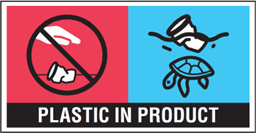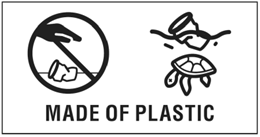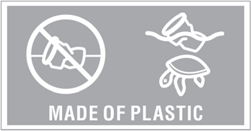- Latest available (Revised)
- Original (As adopted by EU)
Commission Implementing Regulation (EU) 2020/2151Show full title
Commission Implementing Regulation (EU) 2020/2151 of 17 December 2020 laying down rules on harmonised marking specifications on single-use plastic products listed in Part D of the Annex to Directive (EU) 2019/904 of the European Parliament and of the Council on the reduction of the impact of certain plastic products on the environment (Text with EEA relevance)
You are here:
- Show Geographical Extent(e.g. England, Wales, Scotland and Northern Ireland)
- Show Timeline of Changes
More Resources
When the UK left the EU, legislation.gov.uk published EU legislation that had been published by the EU up to IP completion day (31 December 2020 11.00 p.m.). On legislation.gov.uk, these items of legislation are kept up-to-date with any amendments made by the UK since then.
This item of legislation originated from the EU
Legislation.gov.uk publishes the UK version. EUR-Lex publishes the EU version. The EU Exit Web Archive holds a snapshot of EUR-Lex’s version from IP completion day (31 December 2020 11.00 p.m.).
Changes over time for: ANNEX IV
Changes to legislation:
This version of this Regulation was derived from EUR-Lex on IP completion day (31 December 2020 11:00 p.m.). It has not been amended by the UK since then. Find out more about legislation originating from the EU as published on legislation.gov.uk.![]()
Changes to Legislation
Revised legislation carried on this site may not be fully up to date. At the current time any known changes or effects made by subsequent legislation have been applied to the text of the legislation you are viewing by the editorial team. Please see ‘Frequently Asked Questions’ for details regarding the timescales for which new effects are identified and recorded on this site.
ANNEX IVU.K. Harmonised marking specifications for beverage cups
1.Beverage cups made partly from plastic shall bear the following printed marking:U.K.
:
the black line bordering the marking is not part thereof. Its only purpose is to show the thin white line bordering the marking against the white page.
By way of derogation from the first sentence of this point, the marking of beverage cups made partly from plastic placed on the market before 4 July 2022 may be affixed by means of stickers.
2.Beverage cups made wholly from plastic shall bear either the following printed marking or the following engraved/embossed marking:U.K.
:
the black line bordering the marking is not part thereof. Its only purpose is to provide contrast against the white page.
By way of derogation from the first sentence of this point, the marking of beverage cups made wholly from plastic placed on the market before 4 July 2022 may be affixed by means of stickers.
:
the black line bordering the marking and grey background are not part thereof. Its only purpose is to provide contrast against the white page.
3.The marking for beverage cups made partly from plastic shall comply with the requirements laid down in this point.U.K.
Position of the marking
Traditional cups:
The marking shall be placed horizontally on the external surface of the cup away from the rim to avoid contact with the consumer’s mouth when drinking. The marking shall not be placed under the base of the cup.
Champagne-type cups:
The marking shall be placed horizontally on the external surface of the cup, including the upper side of the base that holds the stem. The marking shall be placed away from the rim to avoid contact with the consumer’s mouth when drinking. The marking shall not be placed under the base of the cup.
Where it is not possible to place the marking horizontally due to the shape or size of the cup, it may be rotated 90° and placed vertically.
The boxes of the marking shall not be separated.
Size of the marking
The marking shall be composed of two equal-sized red and blue boxes, which are placed next to each other, and a rectangular black box containing the information text ‘PLASTIC IN PRODUCT’ placed below the two equal-sized boxes. The ratio between the height and length of the marking shall be 1:2.
For cups with a volume of less than 500 ml, the minimum size of the marking shall be 1,4 cm by 2,8 cm (3,92 cm2).
For cups with a volume of 500 ml or more, the minimum size of the marking shall be 1,6 cm by 3,2 cm (5,12 cm2).
Design of the marking
The design of the marking shall be reproduced without adding any effects, adjusting the colours, retouching or extending the background. The marking shall be reproduced at a minimum resolution of 300 dots per inch when printed in actual size. The marking shall be bordered by a thin white line.
The information text ‘PLASTIC IN PRODUCT’ shall be in upper case and in Helvetica Bold font. The font size shall be a minimum of 5 pt for the cups of less than 500 ml and of 6 pt for the cups of 500 ml or more.
Where the information text is translated into another or several official languages of the Member States, the translated information text shall be placed either close below the marking, or inside the rectangular black box below the first language, and shall be in both cases clearly visible. In exceptional cases due to spatial constraints on the external surface of the cup, the information text translated into another or several official languages of the Member States may be placed elsewhere on the cup as close as possible to the marking and where it is clearly visible. The translated information text shall be in upper case and in Helvetica Bold font. The font size shall be a minimum of 5 pt for the cups of less than 500 ml and 6 pt for the cups of 500 ml and more. Where the information text in additional languages is placed in the rectangular black box, derogations from the maximum required size of the marking are possible.
The colours having the following colour codes shall be used:
White: C = 0 / M = 0 / Y = 0 / K = 0
Black: C = 0 / M = 0 / Y = 0 / K = 100
Red: C = 0 / M = 90 / Y = 60 / K = 0
Blue: C = 60 / M = 0 / Y = 0 / K = 0.
4.The marking for beverage cups made wholly from plastic shall comply with the requirements laid down in this pointU.K.
Position of the marking
Traditional cups
The marking shall be placed horizontally on the external surface of the cup, wherever is more clearly visible. The marking shall not be placed under the base of the cup. When printed, the marking shall be placed away from the rim to avoid contact with the consumer’s mouth when drinking In the case of ridged cups, the marking shall not be embossed/engraved on the ridges.
Champagne-type cups
The marking shall be placed horizontally on the external surface of the cup, including the upper side of the base that holds the stem, wherever is more clearly visible. The marking shall not be placed under the base of the cup. When printed, the marking shall be placed away from the rim to avoid contact with the consumer’s mouth when drinking In the case of ridged cups, the marking shall not be embossed/engraved on the ridges.
Where it is not possible to place the marking horizontally due to the shape or size of the cup, it may be rotated 90° and placed vertically.
Size of the marking
The marking shall be rectangular-shaped and ratio between the height and length is 1:2.
For cups with a volume of less than 500 ml, the minimum size of the marking shall be 1,4 cm by 2,8 cm (3,92 cm2).
For cups with a volume of 500 ml or more, the minimum size of the marking shall be 1,6 cm by 3,2 cm (5,12 cm2).
Design of the marking
Printed:
The design of the marking shall be reproduced in black ink without adding any effects, retouching or extending the background. The marking shall be reproduced at a minimum resolution of 300 dots per inch when printed in actual size. The marking should have sufficiently high contrast to the background to be highly readable. To this end, the outline of the marking should be printed in one of the following colours.
White: C = 0 / M = 0 / Y = 0 / K = 0
Black: C = 0 / M = 0 / Y = 0 / K = 100
Red: C = 0 / M = 90 / Y = 60 / K = 0
Blue: C = 60 / M = 0 / Y = 0 / K = 0.
Engraved/embossed:
The design of the marking shall be reproduced without adding effects, retouching or extending the background. The white outline as shown in the marking under point 1.2 of this Annex represents the lines to be engraved or embossed on the cup.
The information text ‘MADE OF PLASTIC’ shall be in upper case and in Helvetica Bold font. The font size shall be a minimum of 5 pt for the cups of less than 500 ml and of 6 pt for the cups of 500 ml or more.
Where the information text is translated into another or several official languages of the Member States, the translated information text shall be placed either close below the marking, or inside the rectangular black box below the first language, and shall be in both cases clearly visible. In exceptional cases due to spatial constraints on the external surface of the cup, the information text translated into another or several official languages of the Member States may be placed elsewhere on the cup as close as possible to the marking and where it is clearly visible. The translated information text shall be in upper case and in Helvetica Bold font. The font size shall be a minimum of 5 pt for the cups of less than 500 ml and 6 pt for the cups of 500 ml and more.
When printed, the colours having the following colour codes shall be used:
White: C = 0 / M = 0 / Y = 0 / K = 0
Black: C = 0 / M = 0 / Y = 0 / K = 100.
Options/Help
Print Options
PrintThe Whole Regulation
PrintThis Annex only
Legislation is available in different versions:
Latest Available (revised):The latest available updated version of the legislation incorporating changes made by subsequent legislation and applied by our editorial team. Changes we have not yet applied to the text, can be found in the ‘Changes to Legislation’ area.
Original (As adopted by EU): The original version of the legislation as it stood when it was first adopted in the EU. No changes have been applied to the text.
See additional information alongside the content
Geographical Extent: Indicates the geographical area that this provision applies to. For further information see ‘Frequently Asked Questions’.
Show Timeline of Changes: See how this legislation has or could change over time. Turning this feature on will show extra navigation options to go to these specific points in time. Return to the latest available version by using the controls above in the What Version box.
More Resources
Access essential accompanying documents and information for this legislation item from this tab. Dependent on the legislation item being viewed this may include:
- the original print PDF of the as adopted version that was used for the EU Official Journal
- lists of changes made by and/or affecting this legislation item
- all formats of all associated documents
- correction slips
- links to related legislation and further information resources
Timeline of Changes
This timeline shows the different versions taken from EUR-Lex before exit day and during the implementation period as well as any subsequent versions created after the implementation period as a result of changes made by UK legislation.
The dates for the EU versions are taken from the document dates on EUR-Lex and may not always coincide with when the changes came into force for the document.
For any versions created after the implementation period as a result of changes made by UK legislation the date will coincide with the earliest date on which the change (e.g an insertion, a repeal or a substitution) that was applied came into force. For further information see our guide to revised legislation on Understanding Legislation.
More Resources
Use this menu to access essential accompanying documents and information for this legislation item. Dependent on the legislation item being viewed this may include:
- the original print PDF of the as adopted version that was used for the print copy
- correction slips
Click 'View More' or select 'More Resources' tab for additional information including:
- lists of changes made by and/or affecting this legislation item
- confers power and blanket amendment details
- all formats of all associated documents
- links to related legislation and further information resources



